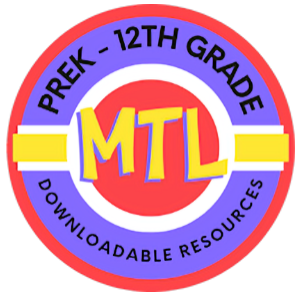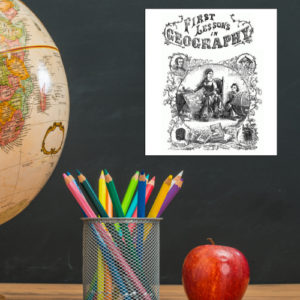Showing 1–20 of 29 results
-
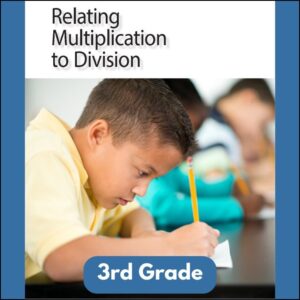 $2.00Buy Now
$2.00Buy NowThis unit introduces students to the concept of division and its relationship to multiplication. Previously, students learned that multiplication can be understood in terms of equal-size groups. The expression 5 x 2 can represent the total number of objects when there are 5 groups of 2 objects, or when there are 2 groups of 5 objects. Here, students make sense of division also in terms of equal-size groups. For instance, the expression 30 ÷ 5 can represent putting 30 objects into 5 equal groups or putting 30 objects into groups of 5. They see that, in general, dividing can mean finding the size of each group, or finding the number of equal groups. Students use the relationship between multiplication and division to develop fluency with single-digit multiplication and division facts.
This resource includes both student and teacher materials.
Number of Lessons: 21 and 1 optional
Lesson Time: Approximately 60 minutes. Please note that each lesson is designed for one instructional block and may be divided into shorter or longer segments based on teacher pacing and student needs.
-
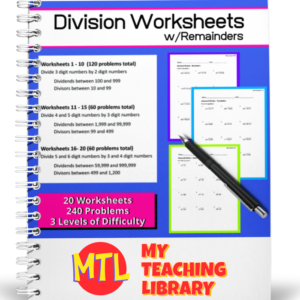 $4.00Buy Now
$4.00Buy NowThis advanced division workbook includes 20 student worksheets with answer keys. There are three levels of difficulty, all quotients will include remainders and there are a total of 240 problems. This workbook as been designed for 5th, 6th and 7th grades.
Sections include:
Worksheets 1-10 – Divide 3 digit numbers by 2 digit numbers (120 problems)
Worksheets 11-15 – Divide 4 and 5 digit numbers by 3 digit numbers (60 problems)
Worksheets 16-20 – Divide 5 and 6 digit numbers by 3 and 4 digit numbers (60 problems) -
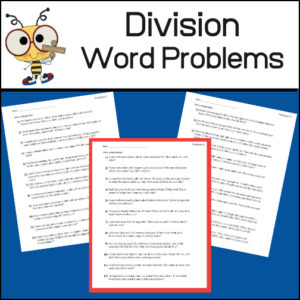 $2.50Buy Now
$2.50Buy NowStudents will have a great deal of practice solving division word problems as this resource includes 96 problems designed for 4th-5th grades.
-
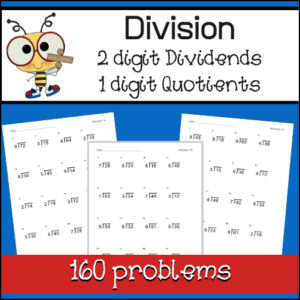 $2.00Buy Now
$2.00Buy NowGive students the practice they need to master beginning long division with these 10 worksheets (160 problems) resource. Students will solve division problems with 2 digit dividends and 1 digit quotients. (No remainders) – Answer Keys provided
-
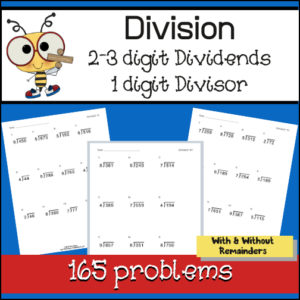 $2.50Buy Now
$2.50Buy NowGive students the practice they need to master long division with these 15 worksheets (165 problems) resource. Students will solve division problems with 2-3 digit dividends and 1 digit divisors. (with and without remainders) – Answer Keys provided
-
 $2.00Buy Now
$2.00Buy NowHelp students learn and understand the basics of division through visual models (division arrays). This resource includes 5 worksheets (8 problems on each) plus answer keys.
-
Sale!
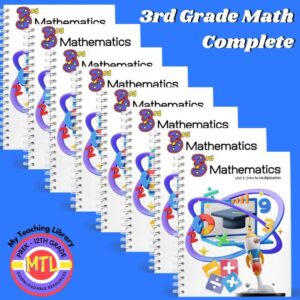 Original price was: $40.50.$35.00Current price is: $35.00.Buy Now
Original price was: $40.50.$35.00Current price is: $35.00.Buy Now3rd Grade Math Complete is an 8 unit program that covers all of the important skills and concepts typically covered in 3rd grade. Each unit includes the student and teacher edition. This resource can be used within a classroom setting, co-op or with individual students. Because it can be used within a group setting, you’ll find many activities for students to complete in pairs of 2. If you are homeschooling multiple children close in age, it would be easy to adapt and teach students together. If you are homeschooling a single child, you can easily adapt these activities through your one-on-one interaction!
You do not need to use the entire program if you are only wanting to focus on one or a few specific Math skills and concepts. If this is the case, you can purchase each unit separately.
Units:
- – Unit 1: Intro to Multiplication
- – Unit 2: Geometry: Area, Arrays and Multiplication
- – Unit 3: Reviewing Addition & Subtraction within 1,000
- – Unit 4: Relating Multiplication and Division
- – Unit 5: Fractions – Number Lines, Equivalent & Comparing
- – Unit 6: Measurement – Length, Time, Volume & Weight
- – Unit 7: Geometry – 2 Dimensional Shapes, Area & Perimeter
- – Unit 8: Review of 3rd Grade Skills & Concepts
-
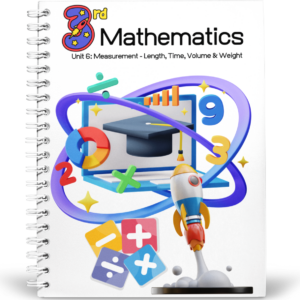 $4.50Buy Now
$4.50Buy NowIn this unit, students measure length, weight, liquid volume, and time. They begin with a study of length measurement, building on their recent work with fractions. Students will explore length measurements in halves and fourths of an inch. They use a ruler to collect measurements and then display the data on line plots, learning about mixed numbers and revisiting equivalent fractions along the way. Next, students learn about standard units for measuring weight (kilograms and grams) and liquid volume (liters). To build a sense of weights such as 1 gram or 1 kilogram, students hold common objects such as paper clips and bottles of water. From there, students move on to measure time. In the final section of the unit, students make sense of and solve problems related to all three measurements. The work here allows students to continue to develop their fluency with addition and subtraction within 1,000 and understanding of properties of operations. It also prompts them to use the relationship between multiplication and division to solve problems.
Includes: Student and Teacher Editions
Size: 228 pages -
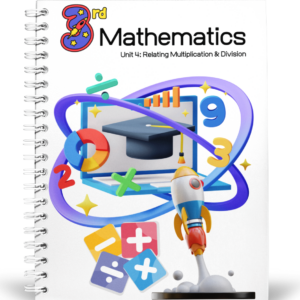 $6.00Buy Now
$6.00Buy NowThis unit introduces students to the concept of division and its relationship to multiplication. Previously, students learned that multiplication can be understood in terms of equal-size groups. The expression 5 x 2 can represent the total number of objects when there are 5 groups of 2 objects, or when there are 2 groups of 5 objects. Here, students make sense of division also in terms of equal-size groups. For instance, the expression 30 ÷ 5 can represent putting 30 objects into 5 equal groups, or putting 30 objects into groups of 5. They see that, in general, dividing can mean finding the size of each group, or finding the number of equal groups. Students use the relationship between multiplication and division to develop fluency with single-digit multiplication and division facts. They continue to reason about products of two numbers in terms of the area of rectangles whose side lengths represent the factors, decomposing side lengths and applying properties of operations along the way. As they multiply numbers greater than 10, students see that it is helpful to decompose the two-digit factor into tens and ones and distribute the multiplication. Toward the end of the unit, students solve two-step problems that involve all four operations.
Includes: Student and Teacher Editions
Size: 431 pages -
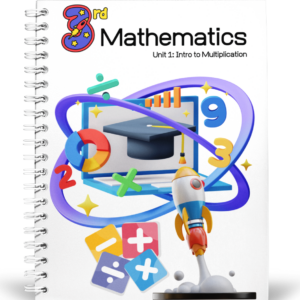 $5.00Buy Now
$5.00Buy NowIn this unit, students ready to learn multiplication will interpret and represent data on scaled picture graphs and scaled bar graphs and then they will learn the concept of multiplication! Students explore scaled picture graphs and bar graphs as an entry point for learning about equal-size groups and multiplication. The idea that one picture can represent multiple objects helps to introduce the idea of equal-size groups. Students learn that multiplication can mean finding the total number of objects in groups of objects each, and can be represented by a x b. They then relate the idea of equal groups and the expression a x b to the rows and columns of an array. In working with arrays, students begin to notice the commutative property of multiplication. In all cases, students make sense of the meaning of multiplication expressions before finding their value, and before writing equations that relate two factors and a product. Later in the unit, students see situations in which the total number of objects is known but either the number of groups or the size of each group is not known. Problems with a missing factor offer students a preview to division.
Includes: Student and Teacher Editions
Size: 369 pages -
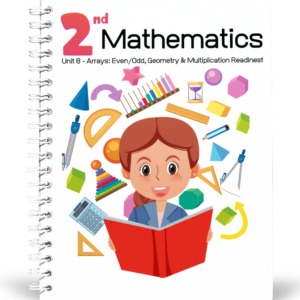 $5.00Buy Now
$5.00Buy NowIn this unit, students develop an understanding of equal groups, building on their experiences with skip-counting and with finding the sums of equal addends. The work here serves as the foundation for multiplication and division in grade 3 and beyond. Students begin by analyzing even and odd numbers of objects. They learn that any even number can be split into 2 equal groups or into groups of 2, with no objects left over. Students use visual patterns to identify whether numbers of objects are even or odd. Next, students learn about rectangular arrays. They describe arrays using mathematical terms (rows and columns). Students see the total number of objects as a sum of the objects in each row and as a sum of the objects in each column, which they express by writing equations with equal addends. They also recognize that there are many ways of seeing the equal groups in an array. Later, students transition from working with arrays containing discrete objects to equal-size squares within a rectangle. They build rectangular arrays using inch tiles and partition rectangles into rows and columns of equal-size squares. The work here sets the stage for the concept of area in grade 3.
Includes: Student and Teacher Editions
Size: 263 -
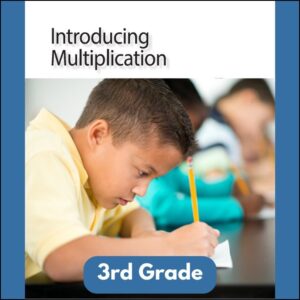 $2.00Buy Now
$2.00Buy NowThis unit is designed to help students learn multiplication by gaining an understanding through the use of picture and bar graphs. Material is presented so that students learn multiplication means finding the total number of objects in groups of objects and can be represented by a x b. Students will work with arrays to learn and understand multiplication expressions before beginning to write the equations. By the end of the unit, problems with a missing factor offers the student a preview to division.
This resource includes both student and teacher materials.
Number of Lessons: 20 and 1 optional
Lesson Time: Approximately 60 minutes. Please note that each lesson is designed for one instructional block, and may be divided into shorter or longer segments based on teacher pacing and student needs.
View a short preview video hereSee description below for more details.
-
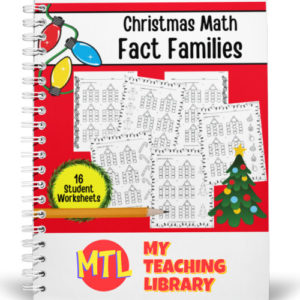 $3.00Buy Now
$3.00Buy NowStudents will love practicing their ability to add and subtract creating fact families on these fun, Christmas-themed pages! This product includes 16 different no prep worksheets, ready to print and go.
(See description below for additional information!)
-
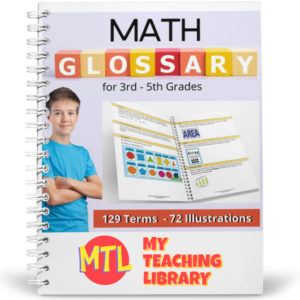 $8.00Buy Now
$8.00Buy NowThis 38 page math glossary has been designed for 3rd-5th grades and includes 129 math terms with definitions and 72 illustrations! Terms include those surrounding basic operations, geometry and elementary statistics.
(See description below for a complete list of included terms)
-
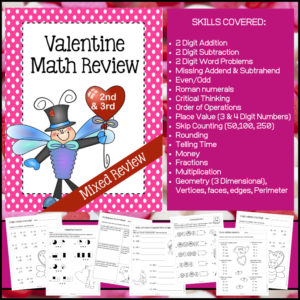 $8.00Buy Now
$8.00Buy NowThis February NO PREP packet is everything you’ll need for an entire month of Math review for 2nd and 3rd grades! This Valentine’s Day themed resource is jam packed with a variety of activities to get your students practicing and reinforcing important Math skills: addition, subtraction, multiplication, word problems, critical thinking, geometry, measurement, time, fractions and more.
Read the description below for more details of the skills covered in this resource or view a complete flipbook preview here!
-
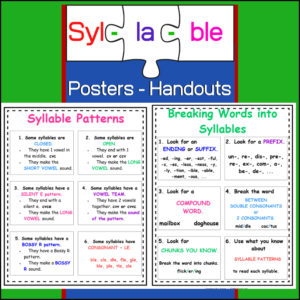 $1.50Buy Now
$1.50Buy NowWhy teach about syllables? Dividing words into parts, or “chunks” helps speed the process of decoding. Knowing the rules for syllable division can students read words more accurately and fluently. Understanding syllables can also help students learn to spell words correctly. This resource will help your students learn to divide words into syllables!
-
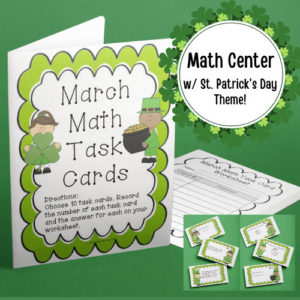 $3.00Buy Now
$3.00Buy NowThis Math center resource has a St. Patrick’s Day theme and provide students practice with addition, subtraction, early multiplication/division, time, money, shape recognition, number patterns skills! Includes: 64 task cards, Math Center sign, student worksheet and an answer key. Tasks center around 1st and early 2nd grade skills.
** Critical thinking skills will definitely be used! **
-
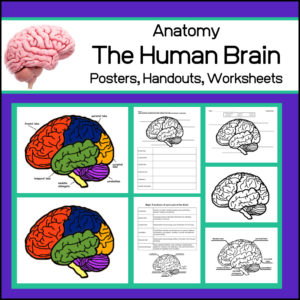 $3.00Buy Now
$3.00Buy NowThis Science / Biology / Health resource will help your students learn the different sections of the brain and the major functions of each. Sections included: frontal lobe, parietal lobe, occipital lobe, temporal lobe, cerebellum and medulla oblongata.
-
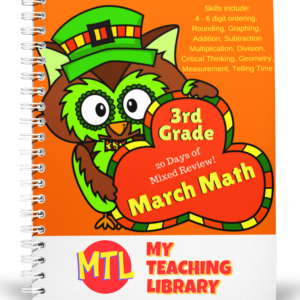 $3.00Buy Now
$3.00Buy NowWorksheets designed to give 3rd grade students practice to reinforce math skills including:
- 4 – 6 digit ordering least to greatest
- rounding to the nearest ten, hundred, thousand
- graphing
- addition
- subtraction
- multiplication
- division
- geometry (area)
- measurement (quantity)
- telling time
Includes 20 fun, shamrock themed worksheets.
